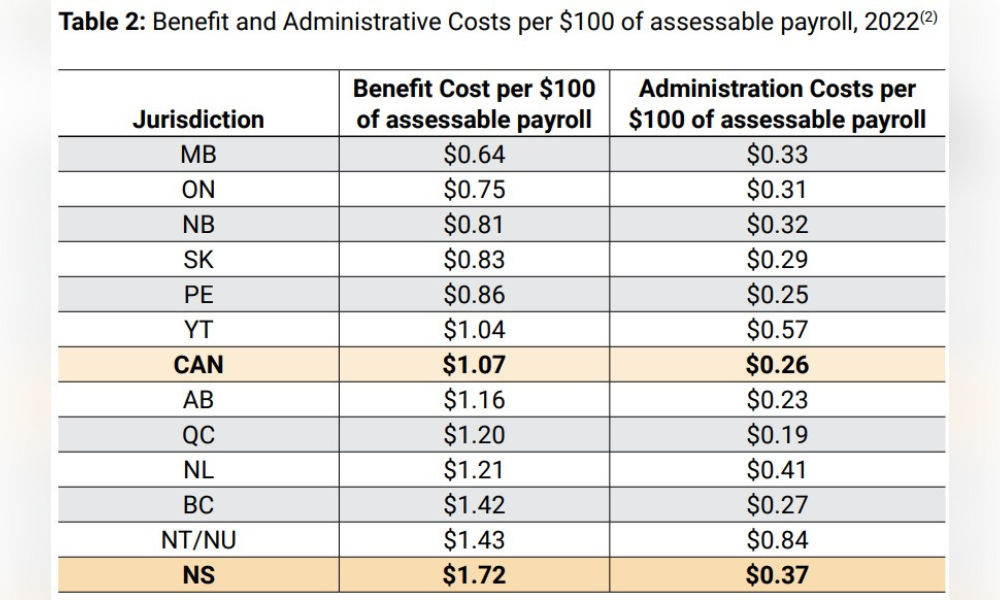
'We have some of the highest employer premiums, the lowest benefits for workers who are unable to work due to injury, the longest duration of injured workers off work due to injury'

A review of the system at the Workers' Compensation Board (WCB) of Nova Scotia is calling for some improvements within the system to better support workers.
Nova Scotia has the highest average assessment rate across Canada at $2.65 per $100 of assessable payroll, according to the report by the Workers’ Compensation Review Committee.
Of the $2.65, $1.72 goes toward benefits (highest benefit costs nationally), and $0.37 goes toward administrative costs (42% higher than the Canadian average).
In 2022, the residual after all costs was $0.38 per $100 of assessable payroll and this was applied to the unfunded liability.

Source: Workers’ Compensation Review Committee
Despite this, the funded percentage of the WCB is 93%. That is within the 90% to 115% Approved Rate Range (ARR) established by WCB to provide guidance on when system changes may be considered.
There are also issues with compensation and benefits for workers, according to the board. These include:
“In Nova Scotia, we have some of the highest employer premiums, the lowest benefits for workers who are unable to work due to injury, the longest duration of injured workers off work due to injury, and among the lowest percentage of workforce coverage in Nova Scotia,” said Douglas Reid, chair, Workers’ Compensation Review Committee. “The recommendations in this report offer a path for Nova Scotia to make substantive changes to the workers’ compensation system that will address some of these key issues and more while considering both employer and employee or injured worker needs.”
The review committee heard that workers and employers lack understanding of the system and may not be aware of how the system operates, and/ or what supports and resources are available, according to the report.
Reid said that the review committee also recommends establishing legislation outlining an employer's obligation to return injured employees to the workplace, and the responsibilities of employees to participate in return-to-work plans, according to a CBC report.
Injured workers should maintain some kind of connection to their jobs, and that can help reduce the amount of time they are off, said Karen Adams, CEO of the Workers' Compensation Board of Nova Scotia, in the same CBC report.
"The employer needs to make sure they have work for (employees) to do and there's some accommodations around that work because they can't do their regular job," Adams said.
A total of 1,078,534 working days were lost to workplace injury in Nova Scotia in 2021, according to the province’s WCB.
The review is the first review of the province's workers' compensation system since 2002. Full findings and recommendations are available here.
Meanwhile, Jill Balser, minister of labour, skills and immigration, said her department is now assessing the recommendations and the best way forward.
“I want to express my thanks to the review committee for all their work over the past year that will help inform our efforts to make the workers’ compensation system better. My Department can now begin to examine the recommendations to determine the best approach for making substantive changes to the system for all Nova Scotians.”
In 2017, one group called for an overhaul of Nova Scotia’s workers compensation system.